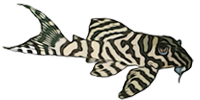https://doi.org/10.1111/raq.13008
https://onlinelibrary.wiley.com/doi/ful ... /raq.13008
ABSTRACT
Ornamental aquaculture and fishkeeping are very popular with millions of enthusiasts worldwide. The number of newly imported fish species for ornamental purposes grew slowly from World War I until the 1980s. It then exponentially increased until now with more than 7900 species and a large number of scientifically undescribed morphotypes. Here we present the first comprehensive review of freshwater and brackish fish importations during the boom of ornamental fish keeping at the turn of the Millennium and discuss this with a cultural and socio-economic lens in the European context. The increase in imports accelerated following the availability of air transport and the end of the Cold War. From the list of traded species, the largest number of species imported for ornamental purposes was found in the following groups: armored loricariid catfish (family Loricariidae), cory catfish (family Callichthyidae, subfamily Callichthyinae), cichlids of African Great Lakes (order Cichliformes), killifish (egg-laying species of the order Cyprinodontiformes), and characids (order Characiformes). These taxa represent ca. 74% of all fresh and brackish water ornamental fish species. The species of fish with the ability to absorb atmospheric oxygen (e.g., Belontidae, including gouramis and bettas) have dominated the market, but their ratio to the other species has declined during the modern era of ornamental aquaculture (after the end of WWI). By identifying the most popular aquarium species traded through the history of the aquarium trade, our findings aim to guide present-day management of ornamental aquaculture and better inform invasion risk assessments.




